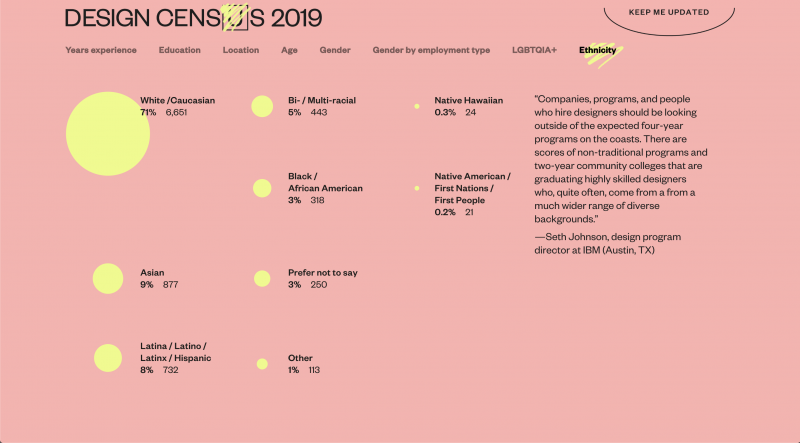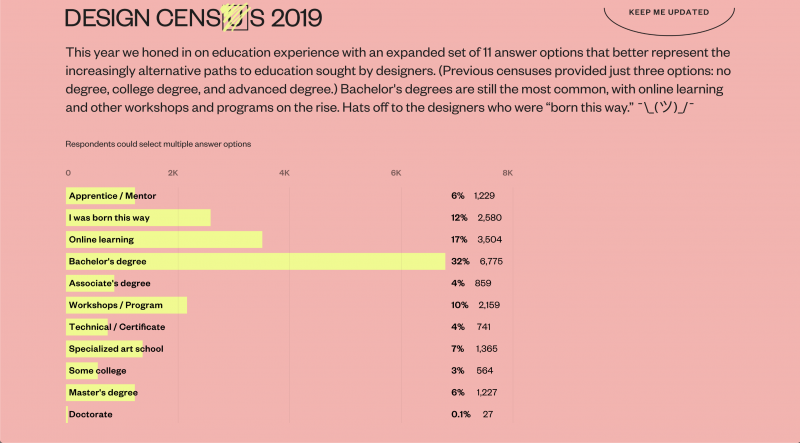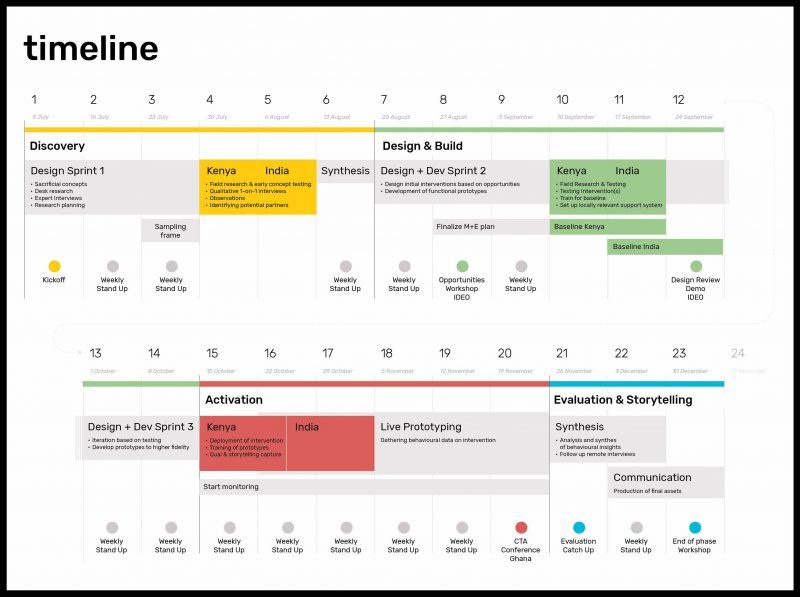Privilege-Centered Design
Posted on November 16, 2019
There is perhaps no more visceral example of the contrast between the worldview of the designer and user than the band-aid. Dieter Rams, a German industrial designer credited as a foundational figure in this practice, described one fundamental principle of good design to be unobtrusiveness. It is on this principle that the ubiquitous skin-tone matched band-aid was developed, intended to blend into the user’s world, but in reality, it became a sore-thumb for the significant number of individuals who deviate from that default. Somehow, while there are alternatives available, they are a rarity, and still, the Caucasian default persists as it is preserved by an ideology that places it as the center. It is from this context that design operates and attempts to undo with a human-centered approach. Contemporary design thinking is infatuated with this alluring concept– the designer putting themselves at the service of humanity and reducing the self from the process in order to place the individual in need, who we will refer to as the subject, at the center. It would seem like an undeniable philosophy for human welfare. In that case, human-centered should be the conditional epithet to every practice. It has emerged as the future of business as 2020 Presidential candidate, Andrew Wang cemented this approach into the mainstream, if it hadn’t already made it, with his policy of “Human-Centered Capitalism.” In reality, the concept of human-centeredness sounds promising but it contains a glaring defect, that it is derived from a flawed source: the human in the role of a designer.
While the philosophy may seem perfect, the designer who must enact it is not.
We find that this model is predicated on building empathy– a much deeper understanding of the subject and their world. This critical step is a test to who is really at the center of this process. The requirement of first establishing empathy within the designer through their personal reflection makes it apparent that this whole process starts with and is filtered through their experience– a mixture of a full life of previous experiences along with this new information gathered through engagement with the subject. This new information, however, is colored by that lived experience resulting in what Donna Haraway describes as situated knowledge: a sense of knowing that is inseparable from and a product of its context. This means of sense-making is actually very troublesome when we consider how it is happening. The subject becomes the raw material for a designer who must process then forge something with it. Whether or not the subject and their needs become diluted in this mixture depends on the inner workings of this processing machine which we exalt as the designer. This machine has some serious problems. To locate them we must understand how it works, which requires breaking it down to its components:
- Demographics
- Education
- Practice
1. Demographics
 https://designcensus.org/
https://designcensus.org/
The average designer is likely not representative of the world they operate in. Diversity in socio-economic status and race are two particular weaknesses. The most comprehensive demographic data on designers is currently the Design Census, a collaboration between Google and AIGA to better understand how this practice is being shaped globally. Although the sample size is not comprehensive, a clear pattern emerged in regards to race. In this sample, 71% of designers were found to be white. In terms of socio-economics, the majority of designers fit into the middle-upper class, making on average $50k-75k, with the second-largest group coming in at $75k-$99k, and the third at $100k-150k. Although there is no existing data on socio-economics before entering the field, it is safe to assume that most designers came from middle-upper class homes, affording them the opportunity to participate in a field that has many financial barriers to entry such as owning a computer or having the right software. Combined, both of these factors contribute to a position of immense privilege, revealing the potential deficiencies in relatability and understanding in their endeavor to solve problems they have never had to face in their own lives.
2. Education
 https://designcensus.org/
https://designcensus.org/
The same Design Census revealed that the highest level of education pursued by the majority of designers (32%), as expected, was a Bachelor’s degree. It is important to note, however, that the second largest category at 17% was self-taught through online learning. Both of these channels of education are lacking in unique ways. Online learning, although a valuable tool for acquiring technical skills, fails to deliver on larger discourses around design as a practice from theory to ethics. While traditional design education addresses these topics, knowledge is in many ways shallow and in serious need of decolonizing. The Anglo-European viewpoint with its attached set of values has been perpetuated as a universal default through these institutions of education. I personally recall a moment in a Design History course in my undergrad where after a few lectures presenting the key figures and their movements along with their images displayed on the auditorium projector, my professor, a caucasian female, flippantly remarked that every one of these figures seems to be a middle-aged white man with a pipe in their mouth. She then felt the need to note that in no way is this history inclusive, it is only a European version with no acknowledgment of other people and cultures outside that sphere, and yet, it was the only one we were taught because it was the history she knew, handed down from her own educators. In a collaborative manifesto concerning the need to decolonize the limited scope of this education, Ahmed Ansari explains
“the horizons of what it knows are neither deep enough nor wide enough, i.e. it does not go far enough back in time, nor does it span space and place. Design practice has no alternatives because it lacks the very thing that makes alternatives possible: the understanding of historical and contextual difference. This is, in part, because of the failure of Design Studies and design history in both informing practice as well as in widening, deepening, and critiquing its horizons.”

Portraits of some of the “Founding Fathers” likely to be encountered in a Design History course
3. Practice

Project timeline from an IDEO project in Kenya & India
From the humble beginnings of industrial and graphic applications, the practice of design has grown tremendously in the last 20 years to encompass a far wider variety of spaces. Design has become a coveted tool in our work, achieving new levels of scale and impact and that have changed it in many ways. While it is sold as an endeavor of social progress, this progress is questionable, as it is subject to the values of the designer and powered by its commercial function. The very fact that design is largely a for-profit enterprise becomes an impediment to truly accomplishing what is best for the user because that only comes second to what is best for business. It is through this economic value that design thinking has gained so much traction. Toolkits, sprint courses, and conferences have been in demand, making concepts of design accessible to anyone who can afford the entry fee, which often excludes key groups of individuals who cannot. However, the exercise of building empathy is by no means a five-step process of subject engagement and extraction that can be modeled, packaged, and sold on a large scale. Rather, it is a personal, human ability that is imprecise, unreliable, evolving, and undefinable. It is also a process that is different for every individual. You as a designer in the role of researcher have a presence that changes the spaces you enter in unique ways. The baggage you carry as a human in this world is with you in that role. Designers have devised a means to mitigate this concern through a model of participation and immersion. The effectiveness of these interactions are often inflated as the privileged researcher depends upon what is no more than a simulation of the day-to-day experience and relationship with a subject that lasts only days to weeks. When these simulations are relied upon as the means for overcoming our privilege and bias in order to achieve the deep, empathetic understanding that is essential to the human-centered practice, what can result is band-aid solutions.
Human-centered design is an ambitious endeavor that in many cases results in positive outcomes, but as Brian LaRossa cautions in his articulation of this “Privilege-Centered Design” until we become “responsible for the butterflies in our brain and the hurricanes they create in the world,” our social endeavor will fall short of putting others at the center and will only serve their needs in the employment of our own.
–MZS
References
Haraway, Donna. “Situated Knowledges: The Science Question in Feminism and the Privilege of Partial Perspective.” Feminist Studies 14, no. 3 (1988): 575-99. doi:10.2307/3178066.
“Human-Centered Capitalism – Yang2020 – Andrew Yang for President.” Yang2020, n.d. https://www.yang2020.com/policies/human-capitalism/.
Jong, Cees W. De. Dieter Rams: Ten Principles for Good Design. Prestel, 2017.
LaRossa, Brian. “Privilege-Centered Design.” Design Observer, June 12, 2017.
“Postcard #1 – Week 1.” Project Marvelous. IDEO, July 13, 2018. https://www.projectmarvelous.org/post/postcard1.
Tristan Schultz, Danah Abdulla, Ahmed Ansari, Ece Canlı, Mahmoud Keshavarz, Matthew Kiem, Luiza Prado de O. Martins & Pedro J.S. Vieira de Oliveira (2018) What Is at Stake with Decolonizing Design? A Roundtable, Design and Culture, 10:1, 81-101, DOI: 10.1080/17547075.2018.1434368
Yang, Andrew. “Humanity Is More Important than Money – It’s Time for Capitalism to Get an Upgrade.” ideas.ted.com. ideas.ted.com, July 16, 2018. https://ideas.ted.com/humanity-is-more-important-than-money-its-time-for-capitalism-to-get-an-upgrade/.